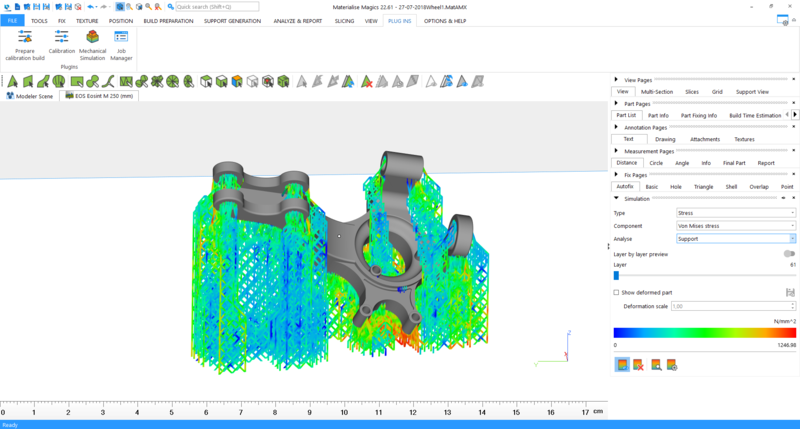The Magics 3D Print Suite is not anymore the unique software of Materialise. The Belgian 3D printing company unveiled at TCT yesterday a simulation software for metal 3D printing.
The latter will complete the Magics 3D print suite by integrating simulation in the additive manufacturing processes. The software will basically enable easy-to-manage simulation capabilities at lower price points.
 Facilitate the cost-competitive environment of 3D printing bureaus
Facilitate the cost-competitive environment of 3D printing bureaus
Materialise explained that in a normal process of CAD to printed part, the printing service can go up to 75% of the total cost. As you can figure out, the production of multiple test prints plus printing failed or unsuitable parts can become very expensive.
This is especially the case for metal 3D printing and the production of high-value, customizable metal components with complex geometries. On average 15 percent of these metal parts fail.
That’s where simulation comes into play
Simulation enables professionals to predict and analyze all the phases of a successful fabrication of a part before its actual production. It simply consists in creating a virtual prototype, helping optimize their build preparation and reduce the number of costly reprints and fails.

“The new Materialise simulation module is focused on optimizing the production process without the need for expert knowledge. In combination with Materialise’s data preparation software Magics, it brings high-end simulation capabilities for 3D printing to the production floor, freeing up time of highly skilled engineers.
With the introduction of the software, available as a Materialise Magics module, Materialise aims to make simulation easy to manage and accessible to a wider audience. Users can apply simulation results directly to the support generation and orientation tools in their trusted Materialise Magics environment. It supports fast reruns on a standard workstation without the need for high-end processing power, and can also be used in combination with other computer-aided engineering (CAE) solutions for highly certified metal production. The module also includes an integrated calibration feature which guides users to the correct simulation settings for their metal machine.”
For further information about 3D Printing, follow us on our social networks and subscribe to our newsletter!
Would you like to be featured in the next issue of our digital magazine? Send us an email at contact@3dadept.com
//pagead2.googlesyndication.com/pagead/js/adsbygoogle.js
(adsbygoogle = window.adsbygoogle || []).push({});





